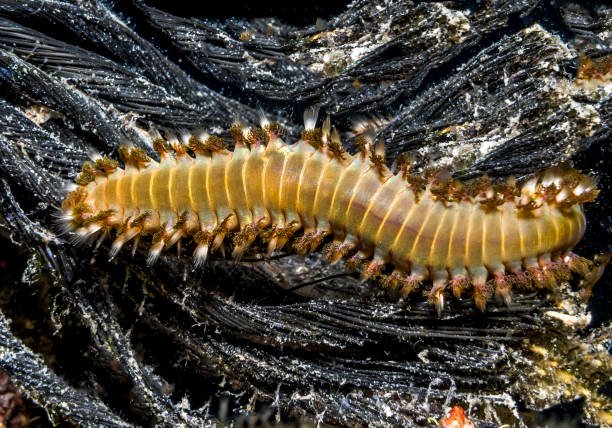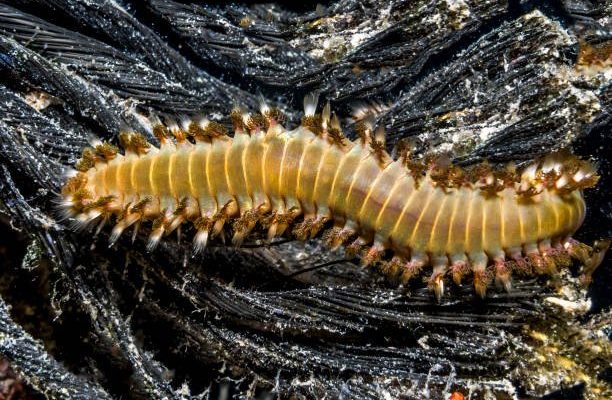
Understanding Bristle Worm Size Variations
When it comes to the size of bristle worms, things can get a bit tricky. Not all bristle worms grow to the same size, and it largely depends on species and living conditions. Some types can reach lengths of just a few inches, while others can grow up to a foot or more! Isn’t that wild?
Typically, the most common species in home aquariums, like the Amphinome or the Hermodice, usually max out around 4 to 10 inches. Their size can be influenced by how rich their environment is in terms of food sources. In a tank where waste and leftover food are plentiful, these worms can flourish and grow larger. So, if you keep a clean tank, you’re likely to see smaller specimens!
Additionally, environmental factors such as temperature, water quality, and space also play major roles in their growth. If the conditions are not optimal, these worms might not reach their fullest potential. You might wonder why this matters—well, larger bristle worms can sometimes become more of a concern, as they might venture out of their usual crevices and become more visible.
Feeding Habits and Growth
Let’s talk about what these worms munch on, shall we? Bristle worms are omnivores and have quite the appetite. They feed on detritus, dead organisms, and even leftover food from your fish, giving your tank a bit of a clean-up service. Honestly, they do a fantastic job at keeping things tidy!
But here’s the catch: if your aquarium is overfed, it can lead to an explosion of bristle worm population. Ongoing access to food can encourage them to grow larger than usual. If every little snack is available, you can guess what they’ll make of it. So, keeping an eye on feeding habits not only benefits your fish but also controls the worm population.
In a thriving setup, you can expect these worms to grow steadily. If you notice them outgrowing their standard size, it might be time to evaluate feeding practices and overall tank health. After all, nobody wants a worm to take over the tank like a little underwater monster!
The Role of Habitat in Size
One of the most critical factors that directly impacts the size of bristle worms is their habitat. In a home aquarium, bristle worms thrive in environments that offer plenty of hiding spots and organic material. They love rocks, coral, and sand where they can burrow and feel safe.
In contrast, if your tank is sparse or too minimalistic, these worms might not feel secure enough to grow. Think of it like living in a cozy apartment versus a wide-open field—everyone needs a little comfort to feel safe and grow! In more structured habitats, bristle worms can find ample food and shelter, leading to larger sizes.
Moreover, the type of substrate you use plays a big part, too. Sandy bottoms can provide a great environment for bristle worms to thrive, as they can burrow and hide away when they need to. If your tank has this kind of setup, you may notice healthier and larger bristle worms compared to those that live in more barren environments.
Is Bigger Always Better?
You might be wondering if larger bristle worms are necessarily better for your aquarium. The truth is, not always. Sure, they can help clean up your aquarium, but larger worms can also cause issues if not properly maintained. Larger worms might become a nuisance, as they can be prone to eating other beneficial critters in your tank.
For instance, some larger species may target small fish or invertebrates, disrupting the balance of your ecosystem. Not to mention, if they decide to explore outside their usual hiding spots, they can surprise you during feeding or maintenance, which can be a bit unsettling.
That said, a healthy population of bristle worms that fits your tank’s size can contribute positively to the ecosystem. The key is finding the right balance. If you’re worried about larger specimens, monitoring their growth through regular maintenance and keeping a clean tank can help keep things in check.
Keeping Bristle Worms in Check
Managing bristle worm populations in your aquarium doesn’t have to be a hassle. Here are a few simple tips to ensure they stay at a manageable size:
- Regular Tank Maintenance: Keep your aquarium clean. Remove any uneaten food and debris to prevent overpopulation.
- Controlled Feeding: Feed your fish only what they can consume in a few minutes. This helps limit excess food for worms.
- Introduce Competitors: Certain species of fish and invertebrates can help keep bristle worms in check. Certain wrasses or triggers may nibble on them.
- Monitor Water Quality: Ensure your tank’s water conditions are optimal. Poor quality can prompt bristle worms to flourish.
By staying proactive, you can enjoy the benefits of having bristle worms without letting them take over your underwater space.
Ultimately, understanding the maximum size bristle worms can reach in home setups can help you maintain a balanced aquarium. While their growth can be surprising, their role as cleaners should not be overlooked. They serve an essential function in breaking down organic material and helping keep your aquarium healthy.
So, whether your tank is home to a few inches of bristle worm or a few feet, just remember to keep an eye on them and maintain a clean, healthy environment. With the right care and attention, you can embrace these curious creatures and let them play their part in your aquatic world. After all, every underwater ecosystem needs its unsung heroes, and bristle worms just might be the overlooked champions of your tank!

